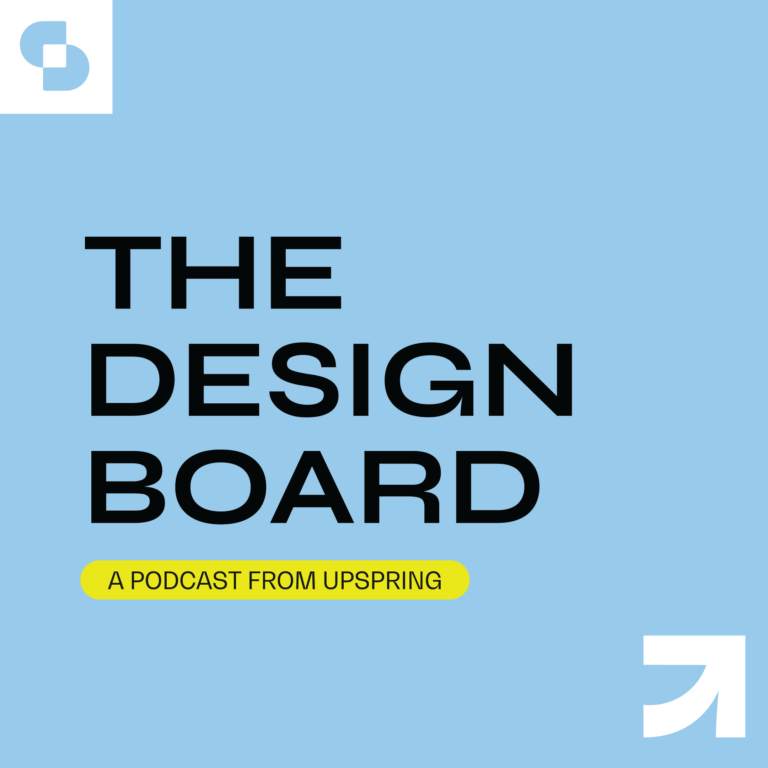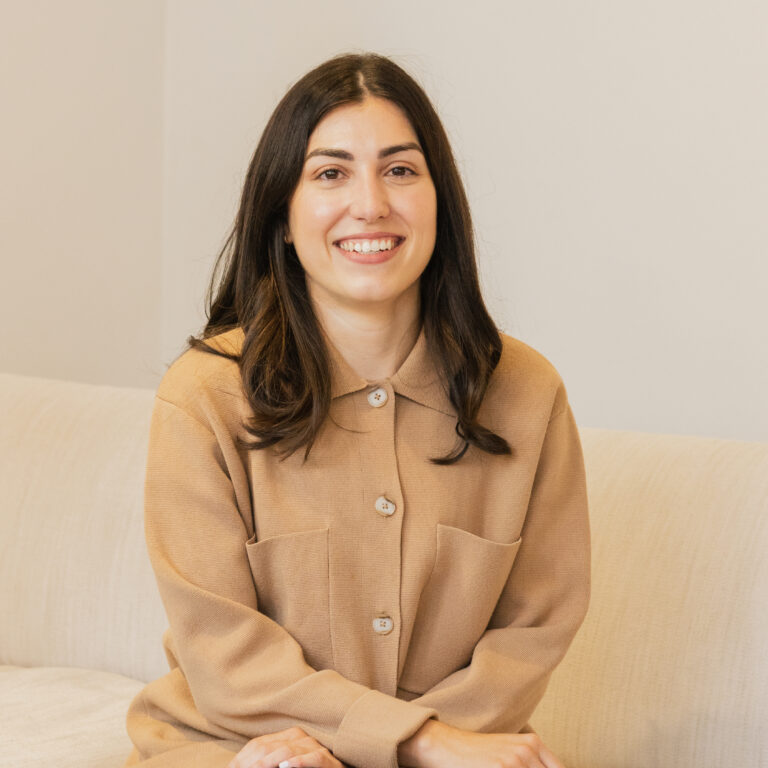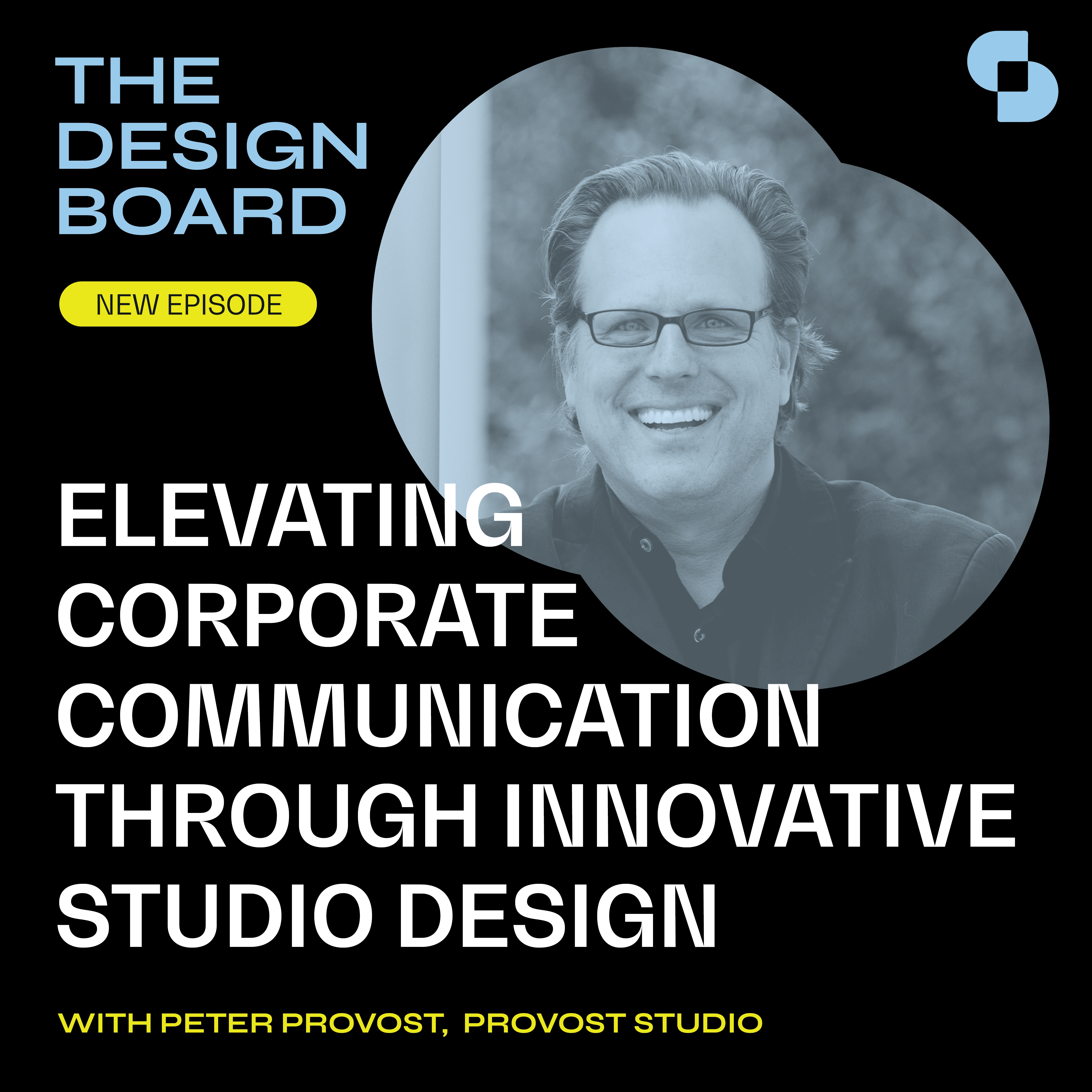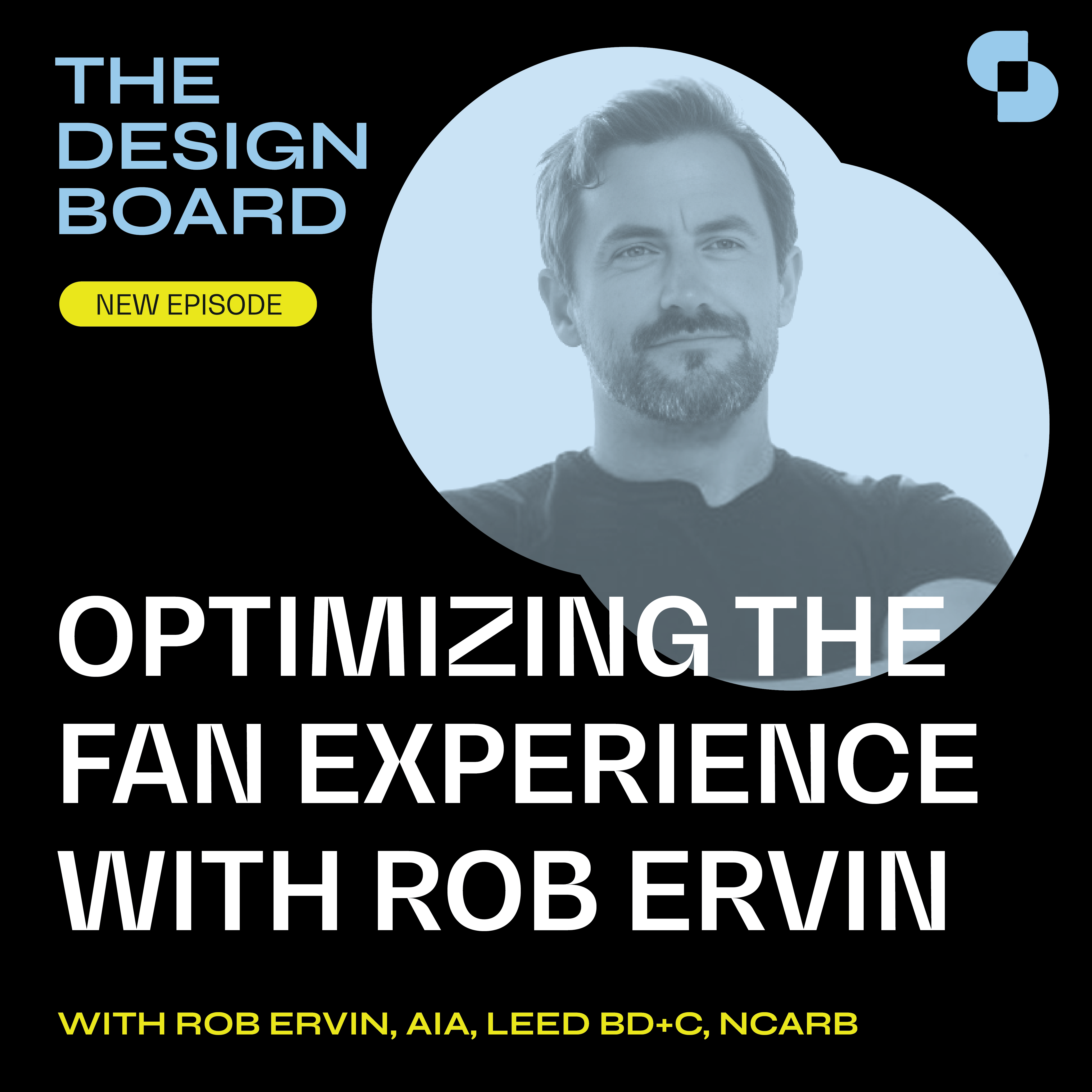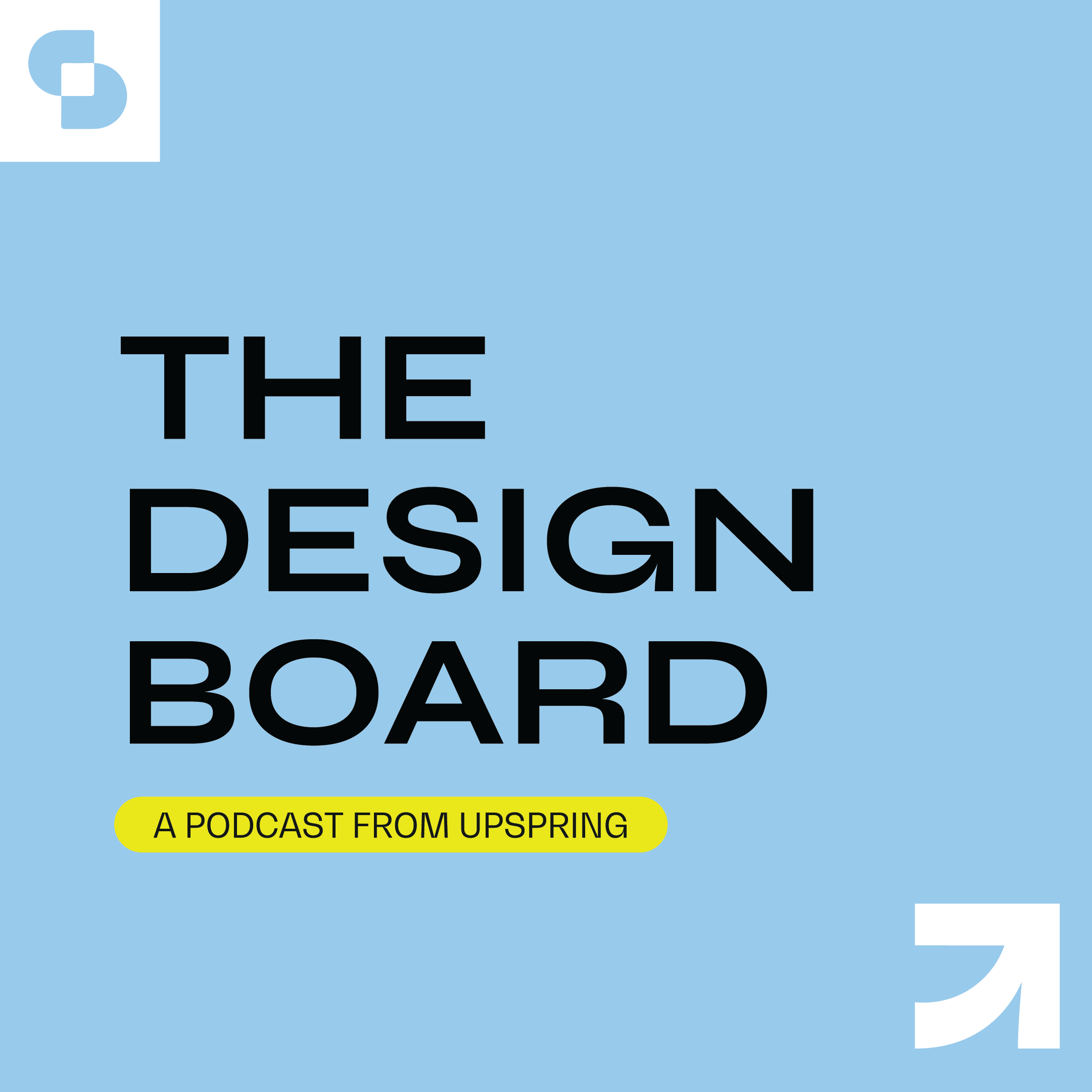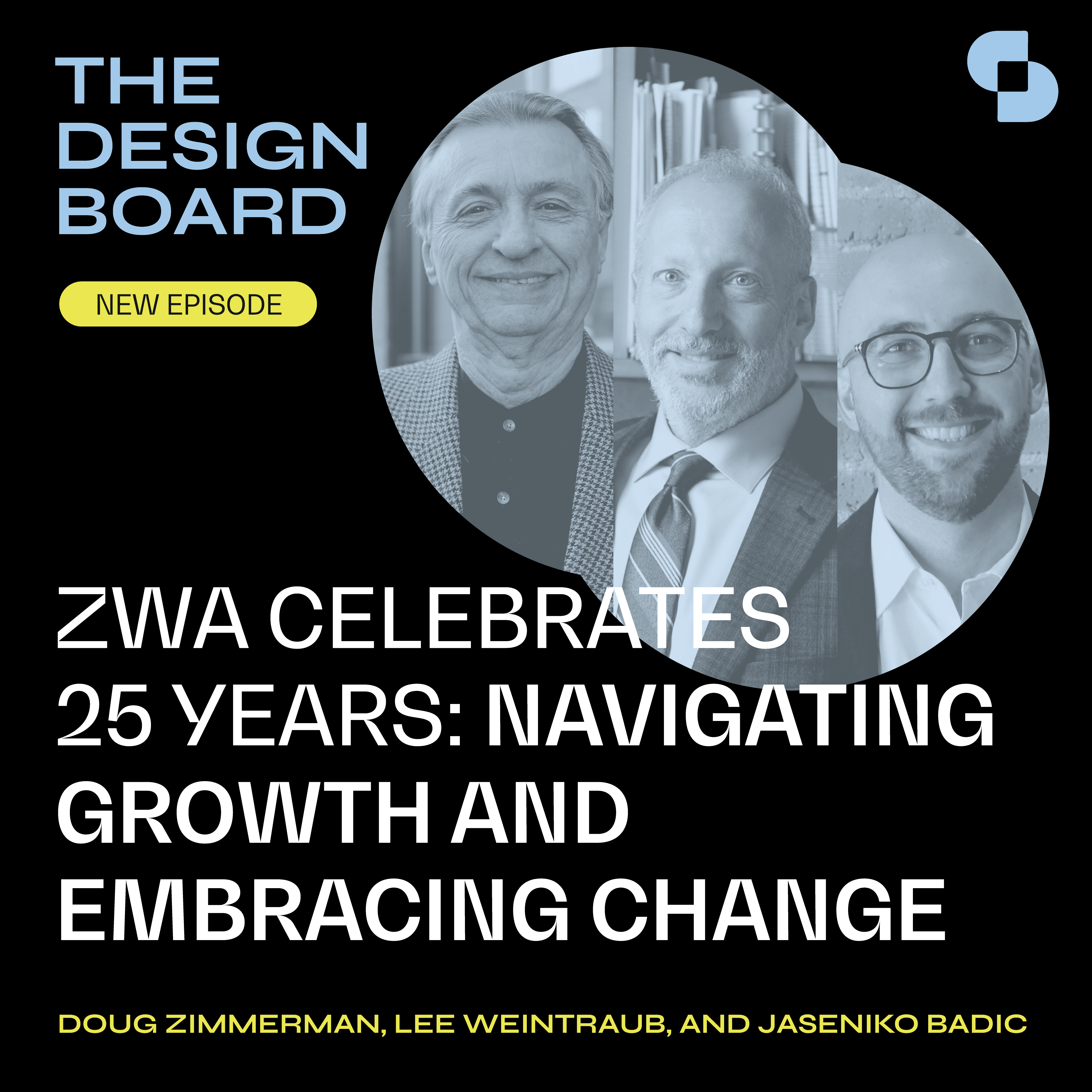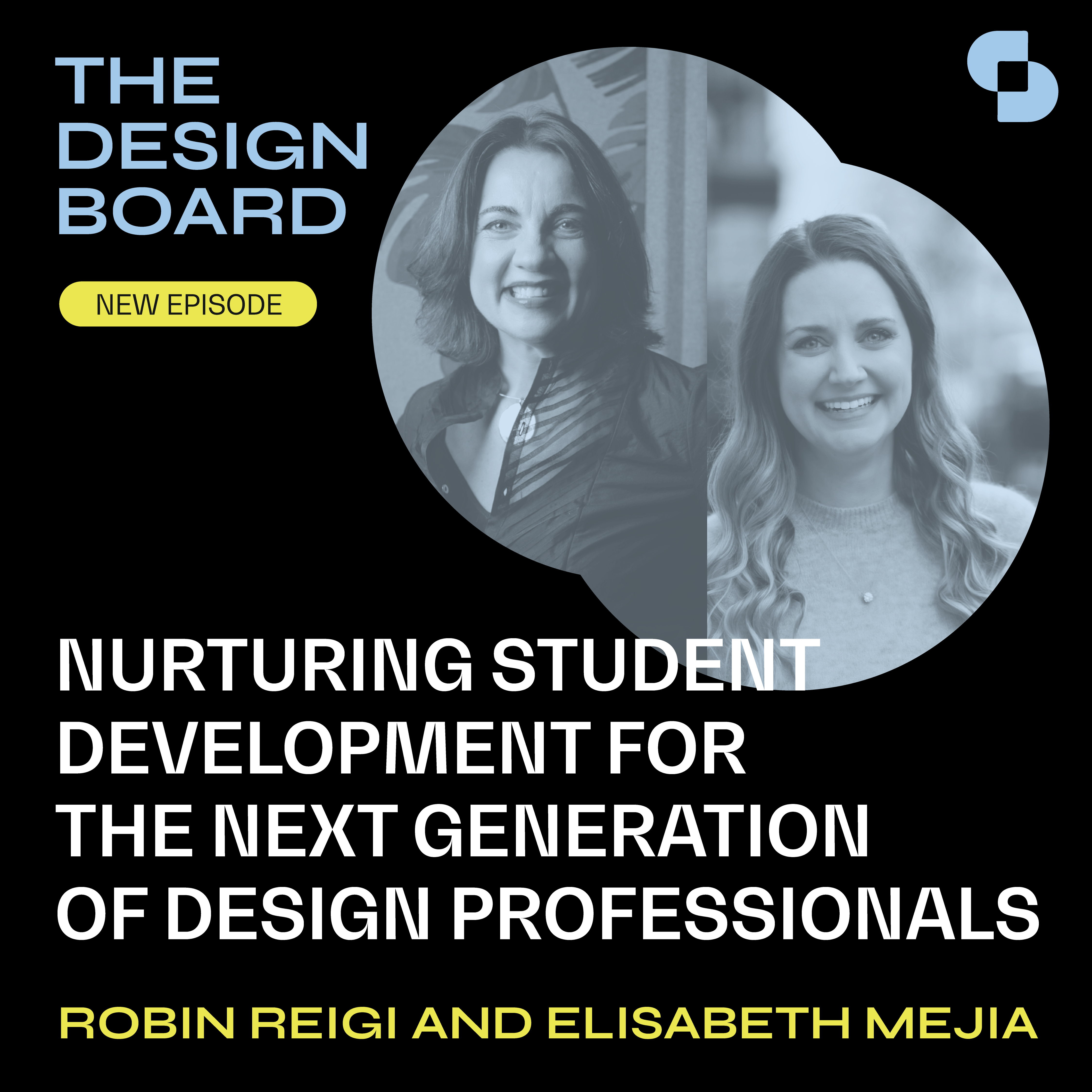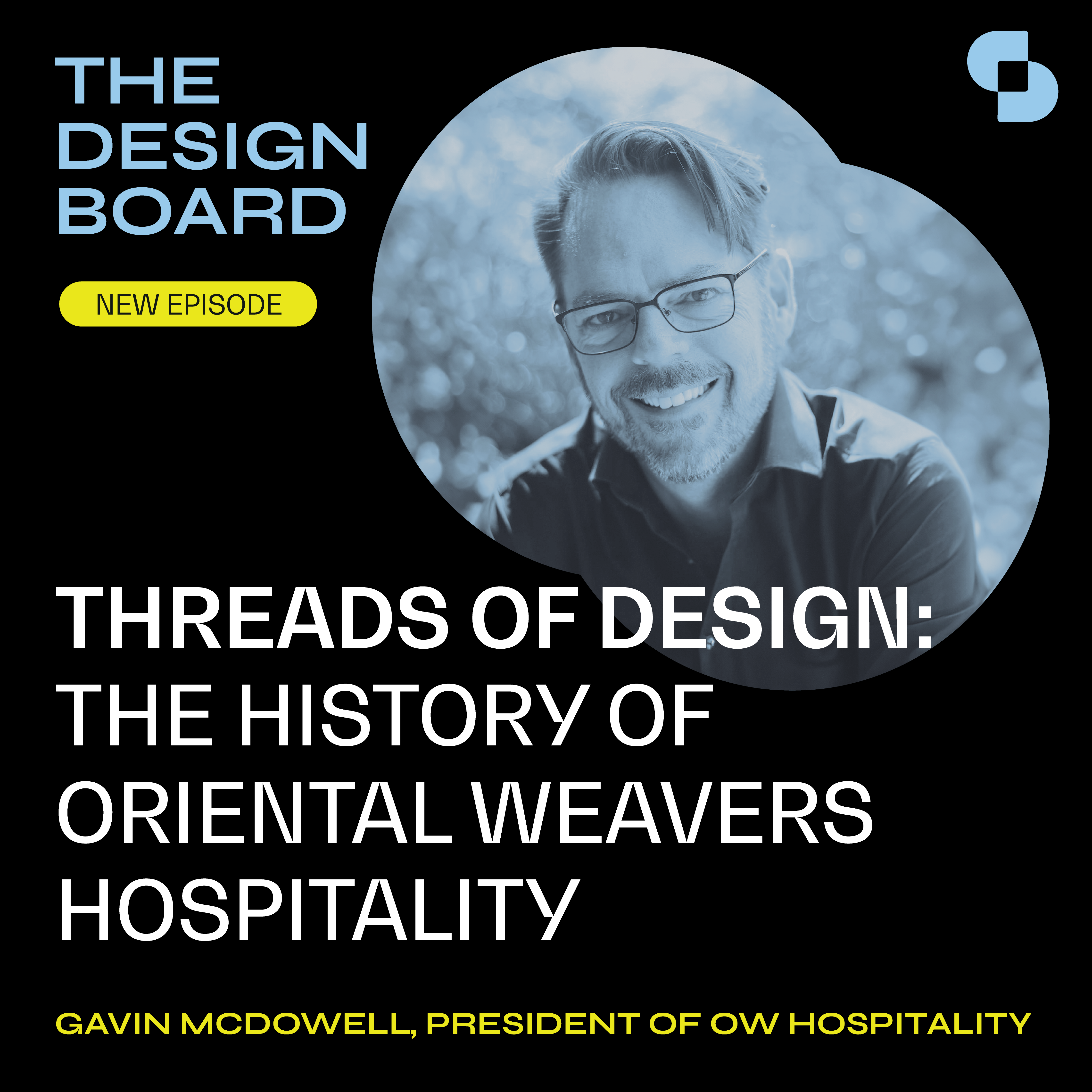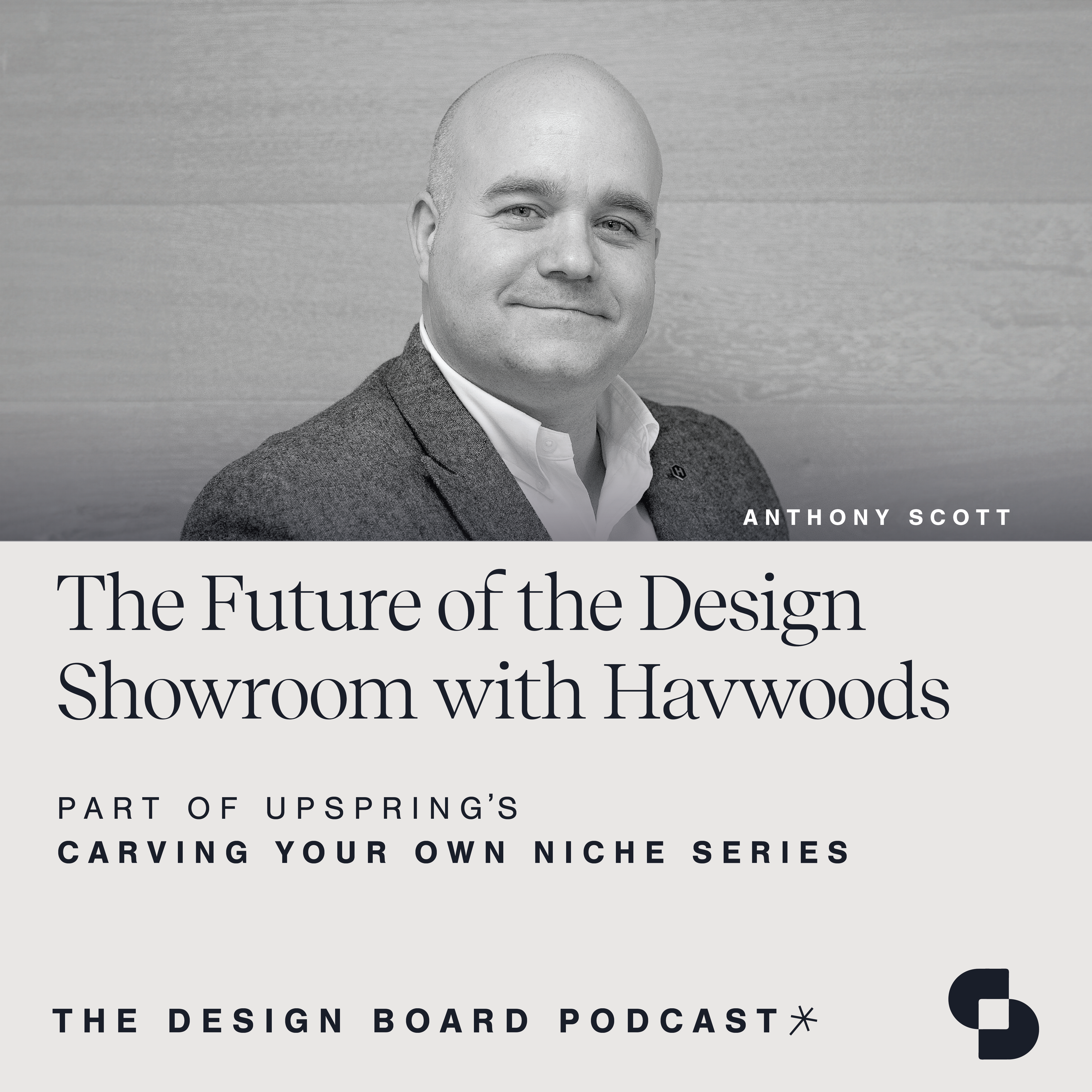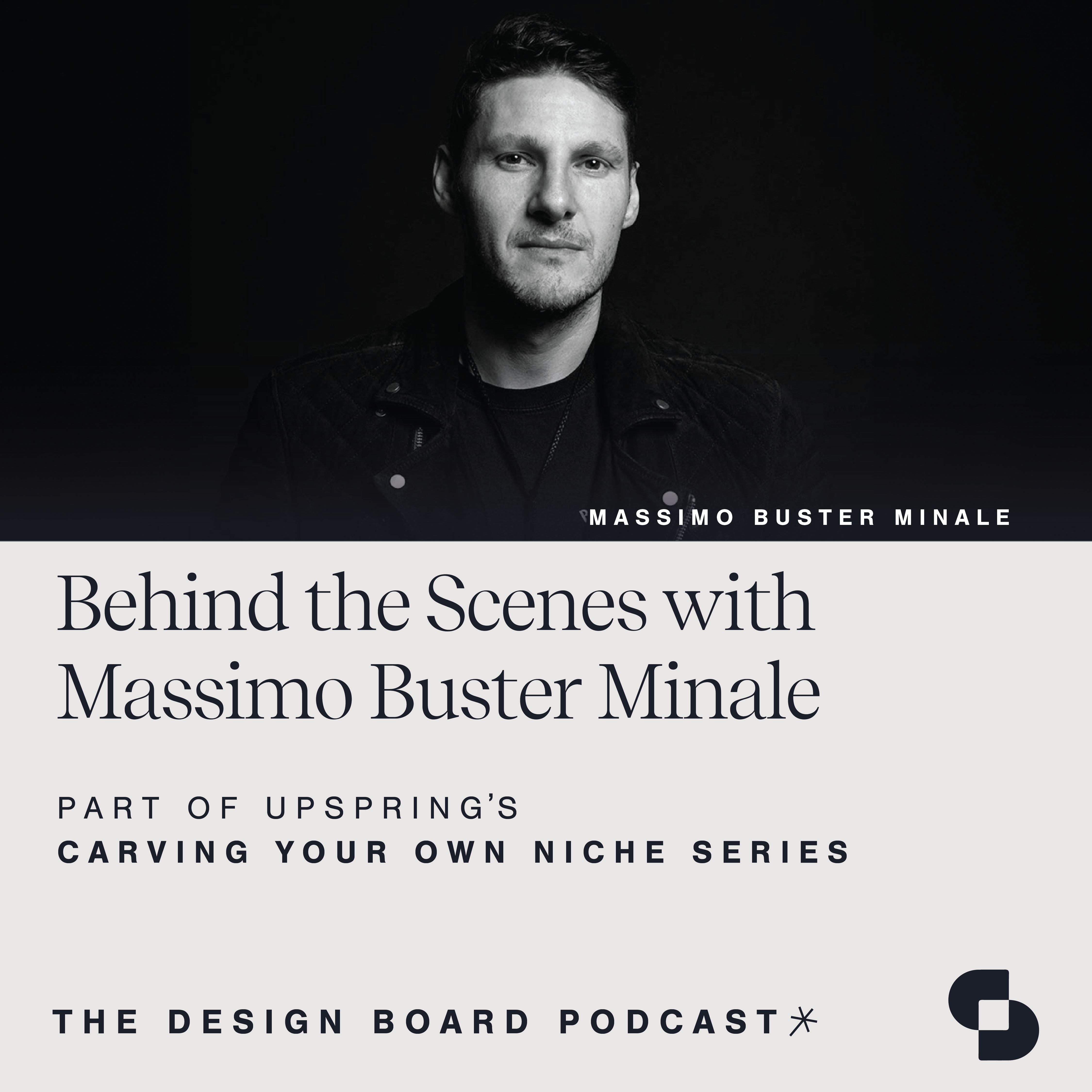In this episode, host Susan Fernandez sits down with the founders of Daniel House Club, a transformative design trade marketplace that simplifies the business of interior design. Alexander and Peter share their inspiration behind Daniel House Club and how they saw an opportunity to create a new kind of e-commerce platform to streamline project planning, product sourcing, and logistic processes. This episode dives deep into their story, sharing insights about their company mission and roadmap for success.
The Design Board, by UpSpring, is a proud member of SANDOW Design Group’s SURROUND Podcast Network, home to the architecture and design industry’s premier shows.
Susan Fernandez: Welcome to the Design Board, a podcast created by the team at UpSpring that focuses on design, development, and everything in between. We invite innovators in our industry and explore topics that support your growth in every way.
The Design Board is a proud member of Surround, a podcast network from SANDOW Design Group, featuring the architecture and design industry’s premier shows. Check it out at surroundpodcast.com.
Daniel House Club is a transformative design trade marketplace that simplifies the business of interior design. Founded in 2015 by brothers Alexander and Peter Spalding, the e-commerce platform streamlines the project planning, product sourcing, and logistics processes.
It enables interior designers to experience greater creative freedom and financial success by shopping over 150 brands, including Bunny Williams, CuratedKravet, [inaudible 00:01:00] to name just a few. And 150,000 products at up to 50% off all in one place.
As past owners of an interior design firm, Alexander and Peter were inspired to establish Daniel House Club as a solution to the many challenges and complexities that design business owners commonly face. The marketplace allows its members to spend more time ideating and executing innovative design concepts rather than sacrificing excess time to survey products, manage vendors, and navigate logistics.
We are so excited to have you both here. Thank you so much for joining the Design Board.
Peter Spalding: Thanks for having us.
Alexander Spald…: Yeah, as always, nice to see you, and we’re excited about this too.
Susan Fernandez: Wonderful to see you guys.
Okay, so I think that this is incredibly exciting. Designers spend so much time sourcing products and really working with vendors, and I think that as a society we have this belief that we’ve all bought into somehow that creatives must suffer.
There’s a certain amount of cliche as a starving artist. We make it so hard for our visionary folks, our creatives, to really become profitable. And I love Daniel House Club. I was in love with it from the minute I understood what you were doing there, and I’m so happy to have you guys here.
So can you each give us a brief history. Like Alex, Peter, what were you doing before Daniel House Club?
Peter Spalding: Since I’m older, I have so many years more experience before Daniel House Club. Before this, I worked for an architecture firm in New York City that did big residential projects. And it happened that out of the same office was an interior design firm run by the wife of the man who owned the practice.
So I oftentimes got farmed out to make illustrations for her projects to pitch to clients, which was the part of the work that I loved the very most. Because somehow you’re just a little bit more engaged with how the person is going to live in their home. So out of that, I knew that I one day would like to have my own practice.
Not necessarily 100% interior design or 100% architecture, but putting those things together. But I, like so many creatives, as you said, was terrified of doing the business part of the design work myself.
And so I felt like Alexander had the background that could really help me make something that would flourish rather than keep me starving forever. So I asked if he would join me, and fortunately he said yes.
Alexander Spald…: And I said yes because I was just graduating college. So this is my first job. I was living in England for a year before this, and didn’t know where I was going to go. Peter and my mom had separately but somewhat around the same timeline moved to Portland, and I was like, “I guess I’ll go to Portland.” And that’s where I ended up.
Peter Spalding: You did have some interesting internship opportunities before.
Alexander Spald…: I did do several internships.
Peter Spalding: That I think helped you.
Alexander Spald…: Well, actually I do reference one quite a lot. Actually, my first ever job was an intern in between my freshman and sophomore year of college at a car dealership, but a big, big network of dealerships that really, really focused on customer service.
And I was a secret shopper for them, and then also went around and marked all of their 30 dealerships on 100 different criteria of customer satisfaction once a month for every month in the summer. And I kept that checklist, which was very exhaustive, and have applied it to a lot of what we do. So we’re still very, very customer service focused. And not just we want to be nice to people. We make that permeate every part of our business and organize structures that enable that.
And that did come from that background. Also, I should be fair, I studied finance and management in college. So really bringing that other half of this business. Rather than just being a purely creative operation, we want it to be something that does allow creativity to flourish because it has the financial freedom and systemized management freedom to do so.
Because you’re right when you were saying designers do like to be a little crazy, I forget what the word you used, but I feel like designers often view success as how frantic they are. And I don’t mean that necessarily in a bad way. You get that frantic energy when you’re running around, and it’s exciting, but also it means you’re not doing a whole lot.
So noticing, figuring out how to [inaudible 00:06:19] free Peter up to not be frantic so he can be really productive has been my main source or main focus on what I do day to day. Until we transitioned to Daniel House Club, which was about three years ago.
Susan Fernandez: So I think of when I go back to this graphic that we created for you where it was a yin yang. And on the one side was everything that a designer is really focused on and where they get their energy as Peter, and then on the Alex side, that really attention to detail in terms of the finances, how we’re going to do this, creating processes. And I guess that’s really where this spark came from. So tell us how did the idea of Daniel House Club emerge, and what sparked this whole thing?
Alexander Spald…: So we were running our interior design firm for about five years.
Peter Spalding: Yeah, five years.
Alexander Spald…: And a lot of things were going well and a lot of things weren’t. Part of that is there are just a billion and one things to do if you’re a design firm. We were doing some project management for the construction which added a billion and two things.
And keeping track of all of that was really, really challenging, especially when so little of it was really profitable. It was just the design fee that was keeping us aloft for a while, which seemed silly when we were selling so much furniture. Like we should make money off this too. But when you buy at 25 or 30% off, there just really isn’t much room to make that go very far if you want to grow a firm.
Peter Spalding: And the other thing too is that clients have become so accustomed to online and easy retail shopping, that I think once upon a time a designer could say, “This product is going to take 50 weeks to arrive, but it’s going to be so much better than this other thing. Let me take care of all this for you.”
Now it’s very difficult to say that, because the customer has a lot more access. So they don’t understand and don’t care to wait that amount of time. So we were thinking, Alex especially was thinking, how can we make it possible to sell this piece as easily as say something out of the Restoration Hardware catalog?
Alexander Spald…: Because it’s always easy to grumble and say, “I wish things weren’t like this.” Or, “I wish we could go back to the old ways.” But they are like this and we can’t go back.
So we wanted to work with the way designers actually are working today or the way we were actually working today, and the way clients expect you to work today. And build a system that worked for both of those and recognize this is the world we are in.
And there are a lot of good things about it. One of the good things is we can make it really fast to find a lot of things. And that’s where I think the last part of where this came from is we originally started building this tool for our firm internally.
So it was just a nightmare. Something a lot of designers probably resonate with is keeping track of basic things like your passwords, or honestly what accounts you have open. When you have 15, 20 accounts open and you saw an item at market two years ago, going to figure out what it is is a headache. And so we were starting to merge all of our catalogs in the backend so we could access that really, really quickly.
Peter Spalding: And maybe we should just emphasize, the process when we started to buy from a vendor as a designer, even like a big box store, was crazy. Send us a fax, give us a phone call, maybe we’ll reply to you in several weeks or days. And our terms for returns and things like that were worse than a regular consumer may face.
So as a designer, you’re taking on the responsibility of purchasing a product, but you have less leverage sometimes than a regular customer. And so that just didn’t work for us. It doesn’t work to build a firm that way.
Susan Fernandez: So this is really interesting. So you identified this problem that you guys were facing and you had the idea that there must be a better way. Once you started building this internal system, what was the next step for you?
Alexander Spald…: It coincided really with us opening a small showroom in part of our office. So we didn’t want to run a store, that wasn’t our goal. But we did set aside a portion of our office. Moved our office to street level, set aside a portion of that where customers could come in, buy some amount of product that we might actually use in their projects, but really see that we had designed this showroom and office in the way that we would design their house.
So it was meant to be a way to draw in new customers. And it worked for a little while, we really ended up just working out of it as an office. But the big thing it did for us is allowed us instead of to buy at wholesale prices instead of designer prices. So designer prices often tend to be 25, 30, if they’re really generous, 40% off retail. When you’re a wholesale or actually have a brick and mortar store, you can buy at 55, 60% off, which is a huge difference.
The amount you’re able to keep in profit once you resell something is significantly larger, and you can still share a portion of that discount with your client and keep even more than you were before. And so when we were building that system and had access to better pricing, I was really just frustrated. I’m like, I wish we would’ve done this from day one because we would’ve been profitable three years earlier, rather than needing to build up enough clientele to support enough volume to get these discounts.
Because you’re doing so much volume, but you can’t do that much volume because you can’t pay anybody because you don’t have any money. And you’re just stuck in the cycle that, as you said before, designers are paying billions of dollars. The cycle that seems unfair. Because you are a good customer, why do you have to fight to get good pricing?
Peter Spalding: And just from the one who’s actually going into the job sites and selling stuff to clients, like Alex said, the store wasn’t necessarily successful as a store on its own, but it just strapped a jet pack to my ability to sell to our clients. Because maybe they were waffling. I said, “No, this is going to be really easy to get.”
And especially things like decorative pillows, always hard to understand for a customer that they’re going to buy $3,000 worth of decorative pillows. But if you can just put them in there, suddenly they’re like, “Oh, I have to have these.” So when the process of acquisition is really easy, then it just makes the project so much smoother.
Susan Fernandez: Okay, so it sounds like you guys reached an incredible pinnacle of, all right, now we’ve cracked it. It takes so long in a business, and I think everybody who wants to serve this community would love to know. So you got to this point, you’ve got a great internal system, you’re now starting to get the volume to realize the discounts.
You are being able to show your clients through your own store showroom. They can touch and feel the goods. So how did this move from just your firm to becoming something that you thought really needed to be offered to designers? You saw the opportunity, so how did you make this go from this idea, this model, to now serving the thousands of designers you serve?
Peter Spalding: One thing is that we just did start to become more connected to other designers, and have the opportunity to talk to them and find out that we weren’t the only people facing this. Even people who’d been running projects for years and years found that this was a problem for them.
So it made it possible for us to really understand if we were to create something, it probably had a pretty good potential of serving a lot of people.
Alexander Spald…: I think looking around at all the people we knew and ourselves, and thinking about the amount of time we put in to get $1, that was a big part of that for me. I know that it wasn’t really on Peter’s mind in the same way, but the amount of time it takes to make a dollar as a design firm versus the amount of time it takes to make a dollar when you are selling furniture is vastly different.
Even within our own projects. We would save, there would be 100 hours dedicated to drawing and planning, and substantially less towards actually selling the furniture, figuring out what it all is going to be, it takes a while. But that time differential is so important.
And I was just looking at it. I’m like, well, this just makes so much more sense. It makes so much more sense to be able to be generating revenue much, much faster per hour of work than we used to. And more than that, helping designers do the same thing.
So we are able to streamline their service so they can also make more money faster because they can work faster. So we’re able to jump and pivot our business right now in order so to make it possible that designers don’t have to do that three to five years into their career, because they’re already going to start out with everything they need to work as quickly as possible to make as much money as possible.
Susan Fernandez: Alex, I love the way that you are able to equate this to a dollar. To be like, okay, because I come from the creative side like Peter, and figuring out what makes us feel valued and where we really contribute is in the creative process. And when you put it down to you’re going to make that dollar faster and almost more concretely, because I think a lot of creatives, we give away hours, we give away our time. It’s just whatever it takes to get the project right, in that it’s so much a faster dollar to be made when you’re selling a piece of furniture that then the designer can recoup and put towards their own creative time.
Peter Spalding: Early in our practice together, I was fighting with Alex. I actually would still fight on this issue, but I was saying, “No, this architect is super successful. Look how many great projects they have published.”
And Alex was like, “Well, we would need to see their books to know if they were really successful.”
And I think the point is no artist measures their success by financial gain, however, they’ll measure it by where they’re published, how important their work is to everybody in the world. However, it is nice to be able to put food on the table and not be staying up at night wondering if you’re going to be able to pay your rent or your mortgage. So finding somebody or something that can help you think in those terms is really critical.
Alexander Spald…: It’s also just really rewarding I think to go home and feel like you made a ton of money and you did really well. And I totally understand that that is not on the top of mind for most people in this field, and that’s actually going back to what I was saying before is we’re not trying to build a business that says, oh, things should be different or you should think differently.
We’re trying to build a business that recognizes this is the way things are, and that’s part of it. This is the way designers work, that’s where their financial mind is. We’re inserting ourselves in that process where they don’t really need to change much and they just happen to be making more money in their current processes. Which isn’t asking a huge amount of them, it’s actually giving them a lot more reward for the same amount of effort.
And that is part of the thought there is because of those arguments with Peter, it’s like, well, this just isn’t going to change. I’m not going to change the psychology of a whole group of people. That’s silly, and actually probably not a good thing. Part of their creative energy and part of their talent comes from the fact that they’re not thinking about the same things I’m thinking about.
Peter Spalding: And the reason I would still make this fight is if you go have art history lessons or architectural history lessons, nobody is ever saying, “Oh, this architect made so much money.” In fact, usually it’s the opposite.
Alexander Spald…: And that doesn’t seem like a good reason to me.
Peter Spalding: They contributed something great to the trajectory of the world.
Susan Fernandez: I absolutely agree though, I don’t understand why our creative minds, the people who design the spaces that we live in should be punished for that creativity. I am with Alex on this. I think I absolutely believe that we pay for what we value and we value what we pay for. And I think it is our creative minds that drive this world.
We need creatives, we need our visionaries. And I think they should be rewarded. So I feel like you guys have addressed a lot of the challenges that designers have faced and came up with really unique solutions to solve for it in your private practice.
Once you decided, okay, we want to share this, what were the steps? How did you build this business? We’ve got two brothers working in a private design firm. You’ve come up with some really great solutions. So now what do you do?
Alexander Spald…: Step one was our first hire, which was Caleb who came from building a sunglass lens company. He co-founded that about 10 years ago, and he was the COO and CFO and built all their systems.
Peter Spalding: E-commerce sunglass lens company. [inaudible 00:21:07].
Alexander Spald…: Yes, very important that it is e-commerce. But built all their systems financially that operated their technology systems, that operated their staffing. I keep saying the word systems, which is getting a little boring, but built all that.
Peter Spalding: Backend structure. Caleb is just systems, ho goes to bed dreaming about systems.
Alexander Spald…: And I actually love that comparison. Peter and I have been making it about design and business, but again, for him it’s that’s what he loves to do. Peter loves to draw buildings, and we’ll do it all day long. And you don’t have to pay him. And Caleb will design business frameworks and structures and systems all day long, and we do pay him, but he does a lot more than that.
I really think when people get started, finding the people who are one, better than them at what you need done. But even more important than that, love it. That’s what they want to do, because then it’s not so painful when you first start out. And nothing’s really working and you’re not making any money, because everybody’s enjoying the aspect of what they’re doing.
And so bringing him on board allowed for me to not have to deal with all the accounting and the finance, and not have to deal with all of the technical minutia that I had been shoehorned into. Because that’s what I could do, and I had a training in that, but I didn’t really enjoy it. And meant that Peter and I didn’t have to argue as much, which was really helpful.
And it just freed up a huge amount of mind space to let us each work in our domains, and also work together better because we were less stressed. And so I think anytime I would start another business in the future, the first thing I would do would be to go out and find somebody who loves the aspect that I really need done and is not getting done right now.
Susan Fernandez: So you immediately identified that your biggest issue to bring this to market was to set up the right process, the right systems that were going to allow you guys to grow. So when did you bring in your developers, the folks who developed the software and built the website for you?
Alexander Spald…: So after we systematized everything, we probably spent about six months honestly going through and doing a lot of that ourselves, figuring out in detail what we were going to be, who we are, planning with the marketing, which we did before we really brought in heavy developers. And we would focus more on the D I Y kind of thing.
So we are built on Shopify, our backend is on NetSuite. These are softwares that you can largely customize on your own. And we didn’t bring in professional developers until a little under a year into the process. And that is actually one of the things that when we talk to investors, all the time they ask, and they usually want more developers, but they’re so expensive. That is probably the most expensive thing we pay for every year, and you can just get underwater really, really fast.
So we wanted to make sure we knew who we were and what we were doing before we started hiring these mega expensive people to take all of our money.
Peter Spalding: It also seems like we’ve run into a decent number of startups who are convinced that they really need to perfect their platform before they go to market, which seems really, really crazy and expensive to me. It would’ve been the way that I would’ve been more comfortable, because I was like, oh, this isn’t going to work and people are going to hate us because it’s not going to work.
But really I think Alex and Caleb pieced something together that was good enough that it could then be picked up by real professionals and made to work extremely well. So I think the idea that it has to be perfect is really not great.
Alexander Spald…: Business term, business school term, minimum viable product. That’s a big thing for us. We still do that actually when we’re pushing out new features. We don’t want to drown ourselves in debt from hiring a lot of developers. And there are a whole bunch of other e-commerce marketplaces that go out and do that. Or they’re VC backed and they say, “Okay, here’s $2 million to go build a website.”
It’s not actually where you make money. You’re not a software company. We’re not a software company. So while we want really, really great technology, we recognize that that is not where our revenue comes from. And so we’re not dedicating huge resources to building that up until we know what it should be and we have the resources available.
Susan Fernandez: That is, I think a very common, common mistake that startups make is really going for that perfection rather than the minimum viable product. It’s something I hear a lot about.
I want to talk a little bit about just briefly, the way that you built your board, because I think you’ve got some folks there that are guiding you with a lot of industry expertise, and also just still we’re talking about who are all the players that we need.
So you’ve built a board, and I think one of the gentlemen on the board is Robert Fodor, and he certainly comes with a lot of industry expertise. So how did you figure out who you needed on your board, and then how did you get them on your board?
Peter Spalding: Wait, should we start by saying we have some totally unprofessional lady on our board that we can’t…
Susan Fernandez: Yes, actually, I would be like, that dumb bitch.
Alexander Spald…: That’s what we say.
Susan Fernandez: No, I feel like we should talk, because I feel like you guys did a really, really smart with now the gentlemen whose names are escaping me.
Alexander Spald…: Jake Weatherly, Robert Fodor, and Steve Krueger.
Susan Fernandez: Yes.
Alexander Spald…: Yeah.
Peter Spalding: And then Susan, that lady.
Susan Fernandez: But I don’t [inaudible 00:27:43].
Alexander Spald…: Yeah, with Caleb coming on board again, one of the first things we did even before the board was figure out those skill sets that we would need that we didn’t have. And so marketing, sales. Sales among all the giftings that we [inaudible 00:28:01].
Peter Spalding: Sales elude us the most.
Alexander Spald…: At the beginning said, we didn’t like sales, we didn’t want to do it. So we knew that was going to be there. Tech, none of us are tech people. So we wanted that. And then we knew we’d have to grow rapidly, so we wanted someone who had already built a business really fast.
Peter Spalding: We hae some possible leads, but we’re still looking for somebody in the shipping realm.
Alexander Spald…: Yeah, shipping, another category because we do a lot of shipping. Marketing, obviously category. So we didn’t really look for people at the beginning. We were looking for skillsets that were missing from our internal team, and then we went to find those people.
So Robert, who worked at Design within Reach, 1stDibs, Cherish, building those trade programs, fantastic fit for us. We found because we knew we needed sales expertise, and it wasn’t something we had. And then Caleb went on LinkedIn and just started looking up people from good companies and found out who ran their trade sales, and contacted Robert. And it’s a funny story.
He messaged Robert, I think he may have been the first person we ever reached out to, and didn’t reply. We didn’t get any message back at all. And four months later there was a message from Robert, and Caleb had forgotten who this was, so we had to look this up again.
And Robert just hadn’t been on LinkedIn for a long time. But he saw our website, really liked it, understood trade sales and that it made a lot of sense, and was really excited. And he was on our advisory board for 18 months before he became a full-time employee.
Peter Spalding: For all those 18 months, everyone was like, “We should just hire Robert.” And then finally we were able to, and he is such an asset to us. And as an aside, sometimes salesy personalities do not always jive with the team perfectly, but Robert is such a nice guy that he makes learning from him and the process of serving our clients really wonderful.
So I think we’ve been blessed also to find the right personalities skillset wise, but two just good people. And I do think that that’s made a huge difference in our ability to lift this off.
Alexander Spald…: I think the advisory board was a great move for us and I do really recommend it to other people I talk to. We meet quarterly. It’s a great way to ask specific questions and not feel like you’re isolated and have to figure them out on your own. Most businesses have run into the same issues, so they’re slightly different because you’ve got slightly different customers and you might have a slightly different product, but on the back end they’re roughly all the same.
And so getting that expertise from people who’ve already lived it is really, really helpful. And it’s just relaxing. I think a lot of this, my decision goes back to what is going to make me feel more confident in what we’re doing? And having those voices speak into it, and knowing that it’s not just all on our shoulders is really freeing.
Susan Fernandez: So what about building this business really surprised you two?
Peter Spalding: I would say I’m surprised that I don’t hate my daily work. I have always been somebody who thought, Nope, a team, it’s not for me. I only do, growing up, the sports I would do were track, cross-country, things where I could be alone. And actually I have loved being a part of a team, because I don’t know anything, or I know 1% of the things that we need to know.
Alexander Spald…: No, you can leave it at nothing. That’s fine.
Peter Spalding: I know nothing at all. No, it’s just great that I don’t feel that I have to know everything. There’s plenty of people here who do have the answer or want to work together to figure the answer out. So that has been a great surprise to me. Probably should have learned that before I was 30.
Alexander Spald…: And now you’re much older.
Surprise. I don’t know, that’s a good question. I’m not surprised and I am at how much I like it. I really like getting to work, and I will say in our previous business there was not a lot of that. There’s some I really enjoyed, like I liked building something. I liked seeing the actual construction, and that is one thing going into e-commerce that I was disappointed on. I don’t know, I like a warehouse or a manufacturing plant. They’re exciting.
And we just sit in an office, and so there was thinking that could be a little boring, but I think it’s super fun.
Peter Spalding: Well, and we also have done a number of engaging events. So even though our daily lives are not really bustling in that physical sense, we do then go out and host events and see people. And so I think it balances out a little bit.
Susan Fernandez: How are you getting feedback from both of your targets, manufacturers and designers? Is that fueling, or is anything there really surprising? Are you getting a good loop of positive feedback or has it been more challenging?
Peter Spalding: I thought that it would be years of a battle to get vendors to be excited to work with us. And it was very hard in the beginning. We would just go to markets and a little bit sheepishly talk about what our plans were. And we are working with 50 designers and we think we can probably ship something somewhere, and they just look at you like you have no idea what’s coming.
And A, the circumstance has changed so much, because there were a few initial vendors were like, “Yeah, that’s fine. Great, I get what you’re doing.”
But now those ones who were like, “You can’t possibly do this,” are starting to come to us and say, “We’d like to work with you.”
And that is an amazing piece of feedback in itself that somebody three years ago who said absolutely no way in the world is now of their own volition coming back to us.
Alexander Spald…: I’m going to expand on your actual question, but a little note on Peter’s comment there. We were just at High Point, and the first time we went to High Point for this, as he was saying, really hard, really hard to get anybody on board. And now we had one, I would say the only hangouts today, or holdouts, are really high-end furniture, which can make more sense. It’s a huge investment, and why would you want to sell or buy a $20,000 chair you’ve never sat on?
But the rep actually reached out to us to try to get these lines on, because she was saying one of the owners of this company is still saying people don’t buy high-end furniture online or won’t buy high-end furniture online. And she’s like, “Yes, they do. They are right now, they’re doing that.” And so it was nice to hear that.
I’m like, “Yes, they are, and they will.”
But structurally, thinking about your question, how do we get feedback? So not only do we have our advisory board, which is made up of those categories we talked about for our internal issues, we also have a customer advisory board and we try to make that as a subsection of our various customers.
So big spenders, small spenders, mid-size firms, small firms, various parts of the country. And so we meet with them quarterly to get feedback, present them issues we’re facing or things we might want to do. And that’s really helpful ways to do it.
We also have so far done annual customer surveys of a more random subsection of our customers. Getting that manufacturer information has been harder, and so we get a lot of it at High Point or markets as Peter has said. But we are also, the advisory board fashion has worked so well, next quarter, possibly Q4 but hopefully Q3, we are going to build out a vendor advisory board which we want to have some reps, independent reps, internal reps. I’d love to have an owner of a manufacturer and figure out some way to slot that into an advisory board, because that’s really important to us.
We care about our vendors a lot and want to make sure we are working with them in the best way possible. And we love advisory boards. Why not have another excuse to have a party once a quarter?
Susan Fernandez: I love that and I love how connected you stay with your clients on both sides to really understand what challenges they’re facing. And working with the sales reps is so vital since they have their own challenges to help bring the companies that they represent into what is really happening now, it’s such a dynamic market. And manufacturers themselves tend to be slow to embrace that level of change.
I have to ask you guys, what’s it like working with a sibling all the time?
Alexander Spald…: Ups and downs.
Peter Spalding: It really helps to have a team mitigating our personalities so we don’t have to talk to each other that often. We do enjoy each other most of the time. But actually one of Alex’s good college friends who is obsessed with Myers-Briggs, when we first set out to work together had us take all these aptitude tests or whatever they’re called.
You can tell that my personality type is one that does not really buy into the results of the test. But anyway, we have actually two of the least collaborative personalities. And I would say that if you put us on a project alone together, it’s basically just going to stop in gridlock.
But once you put in a few other people, I think one thing is that we do both respect each other in our territory of expertise. So even if we don’t immediately agree, we do have some built in deferment, I think.
Alexander Spald…: Yeah, a lot of people when we were starting out were like, are you sure? Are you sure you want to work with a sibling? And my reason for saying yes was always that we have fought our whole lives and we’ve always gotten along later.
Susan Fernandez: Figured it out.
Alexander Spald…: Yeah, I don’t know how, we’re pretty good at the whole argument and resolution phase, which is important. If you can’t do that, don’t work together. The other thing I’ve noticed in this is you don’t have the same barriers with your siblings you do with your colleagues, and things escalate way quicker than they need to or would with other people in your office.
And so as Peter was saying, having people around makes things a lot easier. Because you can treat people professionally rather than family, and that you can say whatever you want to them because they’re terrible.
Peter Spalding: What I’ll also say, I do think there are a few, every once in a while we do have an inherent built-in non-verbal communication where I think we know we’re on the same page, even if we’re sitting in a group of a bunch of people conversing. And we don’t need to say anything. And that can be really, I think, helpful. Is that true?
Alexander Spald…: I think if it’s not the same way, we’re not on the same page.
Peter Spalding: It can go the opposite way too.
Susan Fernandez: Well, I’ve had the pleasure of working with you both, and I do think you have very different strengths but together incredibly powerful. Because I’m sure somebody looking at a spreadsheet thought, well, there’s a huge opportunity here for us to help designers. And then I’m sure a designer thought, my gosh, isn’t there a better way where this could be organized?
But it takes these two different perspectives to really bring it together, and in my opinion, just have something that is truly functioning for the market. So it came from within the industry and it’s serving the industry, but you definitely need that yin yang perspective. So tell me, what’s next for Daniel House Club?
Alexander Spald…: We’re taking over the world.
Peter Spalding: A quarterly retreat somewhere amazing for Susan to enjoy. No, I don’t know. No, we do know what’s next.
Alexander Spald…: Yeah, we’re growing pretty quickly, so we’re still doing a small capital campaign, which is going to free us up to hire a few more people. We’ve actually already hired, I think we’re up to 11 people now working full-time, which is pretty exciting.
Peter Spalding: The biggest bottleneck for us has been adding new product in an efficient way. And suddenly we have a team of people doing that, and we’ve added four or five catalogs in the last two to three weeks.
Alexander Spald…: Yeah, we’re going to be adding product faster than ever, which we’re super excited about, because designers always tell us you need more things. Even when we add more things, they’re like, “Nope, you need more.”
And so we’re going to add those faster than ever. And we are building out some new tools, actually I should say mostly on the backend right now. We are working at integrating all of our backend features so we can still focus on the customers, because in reality, you get stuck doing a whole lot of really boring stuff, like making sure this accounting book talks to this customer or CRM tool.
And we have the information about our customers correctly. Putting those together will allow us to focus on the customer journey, on providing new exciting tools for them, unlike boring backend tools. And what’s really next is we’re staying very focused to our short-term in terms of building this up, but we want to start adding additional product categories for designers, things that they don’t really have very much access to right now, but specify a lot.
So that the obvious is tile, plumbing fixtures, some electrical, some built-in materials. So that was one of the most annoying things for me when we were running our firm is Peter would specify like $400,000 of materials and we would just hand the profit away to the contractor.
It’s like, why are we doing this? There are some legitimate reasons, we are working on figuring out how to process that correctly. Again, fitting in with the way things do work and the reasons we know they work that way. So that will be probably a little over a year, but we’re working on it right now.
Peter Spalding: And in case we haven’t said it, the mission of our business from the beginning was to be the quickest place to find and actually buy what you’re looking for. So as we introduce more tools, the forefront is always being able to purchase quickly.
We don’t necessarily think of ourselves as a design tool, because a lot of designers we talk about, they’re not interested in another tool.
Alexander Spald…: They work with enough of those.
Peter Spalding: Yeah, they work with enough tools. Everything we do is product first and then seducing people into using tools that are just really natural and easy.
Alexander Spald…: So we’re really excited about, I should say we. I’m really excited about some of the things in AI happening right now, and I see very obvious applications. But we want to build those in such a way that it just happens.
So we have our board feature that allows you to add to boards, but before you can make a board you have to answer some information about your project and your client. And I want to add a little bit more context to that. And so the boards can start to be pre-populated as a jumping off point. Not as a way to replace designers, because that’s a big part of the design process is sifting through and learning and seeing things.
But you get to the point where they’re just a billion sofas, and that’s too many. And we want to start to use those tools, build them into our website so that you can filter down and reduce the sifting you have to do to find the perfect item.
Susan Fernandez: Yeah, that’s really exciting. Very exciting. I love that you are incorporating some AI, and you can see how that will really serve designers. So any advice or pieces of wisdom you guys have for young entrepreneurs looking to solve a problem in the design or architecture industry?
Alexander Spald…: Ever since Caleb started, my advice to people has always been find a really good partner to work with who does things, I guess I already said that, but who does the things you’re not able to do. And my other very practical piece of advice is to read a book called the entrepreneurial operating system. I’ve read a lot of business books. I think a lot of them have some good insights, but also wrapped in a whole bunch of fluff in order to make the book big enough to justify $20.
And I think the EOS or entrepreneurial operating system is one of the few that is practical all the way through and pretty easy to implement. You don’t need to do a whole lot of extra thinking, which honestly you shouldn’t need to. People have already done this, don’t reinvent the wheel on how to apply it to your business. And that was a huge help for us.
And it’s not just an early stage thing. It’s early stage through large companies, and you can keep these systems going forever. And you don’t need to find somebody who’s a pro at that part, because you can be a pro, because it’s a great book.
Peter Spalding: I think for me would be don’t be too timid. I walk into a house that is a dumpster and I can immediately see one day it will be a palace, but I have a really hard time doing that in a business, a small business that’s growing. I see where we are today. I become terrified and think, oh my gosh, everything’s going to collapse.
But a lot of people around me think about a business the same way that I would think about a house. So I think always envisioning the future and what you plan to become, what really helps you make the decisions you need to make today.
Alexander Spald…: On that, not being too timid is like there’s so much in this industry right now that’s changing. And I’m excited about that, but there’s also so much that is stuck. And if you see something stuck and everybody tells you that’s just the way it is, just work to change that. I think that’s a great opportunity. If the reason is that it’s the way it is.
Peter Spalding: That’s not a good enough reason.
Alexander Spald…: It’s time to break that, yeah.
Susan Fernandez: Thank you so much for being here today with us. I have been a big fan of yours. I look forward to seeing the meteoric rise of Daniel House Club.
Alexander Spald…: Thank you for having us, Susan. We’re big fans of yours too.
Peter Spalding: Yes.
Most of the time. No, all the time. All the time.
Alexander Spald…: 80% of the time.
Susan Fernandez: 90, no.
Alexander Spald…: Don’t get carried away.
Susan Fernandez: 70% of the time.
Alexander Spald…: Exactly, you nailed it. As always,
Susan Fernandez: Thank you so much for listening in with us today. We hope you leave inspired by the ideas in today’s episode. For more, follow UpSpring on LinkedIn and Instagram. And don’t forget to check out the amazing lineup of shows brought to you by the SURROUND Podcast Network at surroundpodcast.com.

